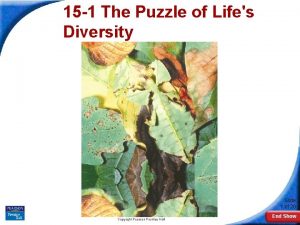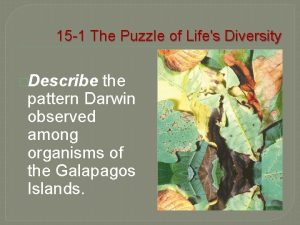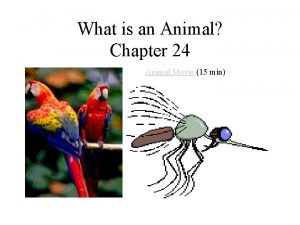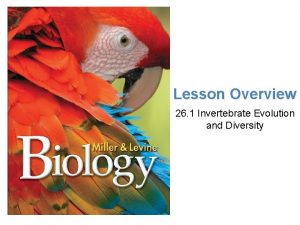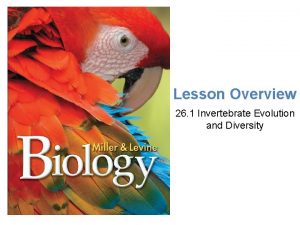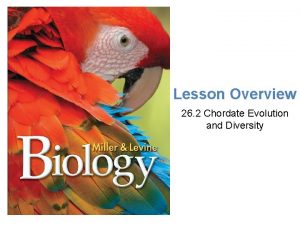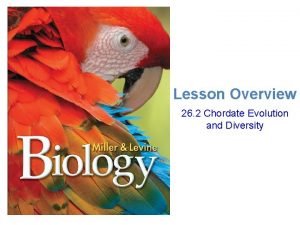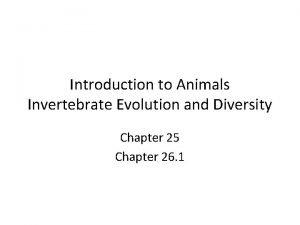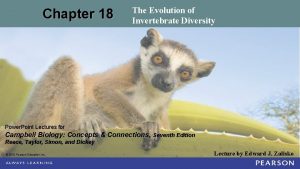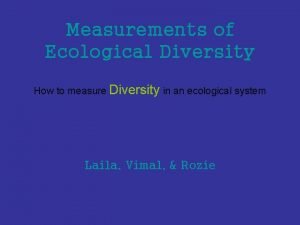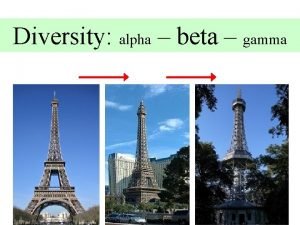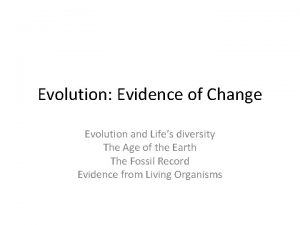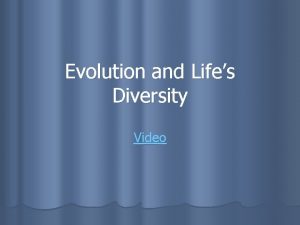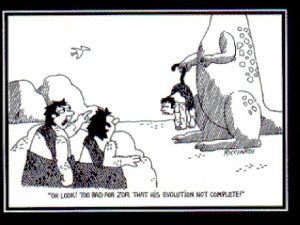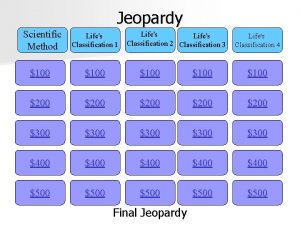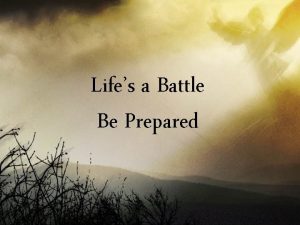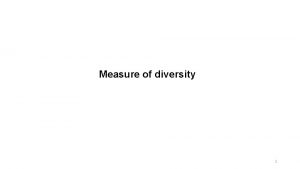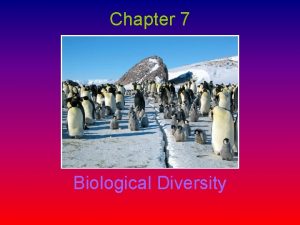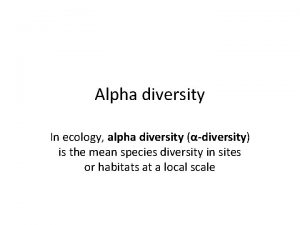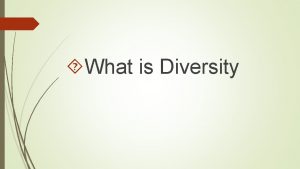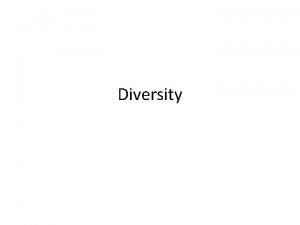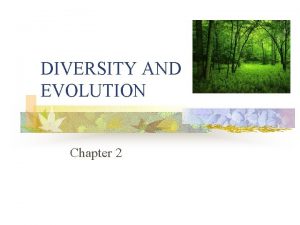Evolution and Lifes Diversity Ch 13 and 14























- Slides: 23

Evolution and Life’s Diversity Ch. 13 and 14 Evolution: the process by which modern organisms have descended from ancient organisms

Darwin’s Dilemma Full name: Charles Robert Darwin His voyage: 22 years old at departure Vessel name: Beagle

Route taken: What he did during the voyage: Went ashore and collected animal and plant species

On board he: Got sea sick Examined his specimens Filled his notebooks with his thoughts and observations Spent many hours reading the most current scientific books

The Diversity of Life Biodiversity: the variety of living things Why was travel a significant contributing factor to Darwin’s work? He saw countless of different living things Current estimates of the number of living species range from 3 million to 20 million 99. 9% of species that lived on Earth at some time are now extinct

III. Fitness: To survive and Reproduce Fitness: the physical traits and behaviours that enable organisms to survive and reproduce in their environment Darwin’s book: The Origin of Species by Means of Natural Selection Published: 1859

In it he argues that : just as with each new organism comes from preexisting organisms, each species has descended from other species over time. If you look back far enough in time, you will see that all species have shared or common ancestors. This principle is called common descent

Darwin also says that fitness arises through adaptation Adaptation: any inherited characteristic that increases an animal’s or plant’s fitness for survival Amazing adaptation. One of the extraordinary adaptations which evolution generates in the extreme Antarctic cold is found in the ice fish. It has evolved to have no red blood cells and no haemoglobin, meaning that its blood flows more freely. The oxygen which its muscles need simply dissolves in the blood. (Image: J Gutt, Alfred Wegener Institute)

13 -2 Age of the Earth Evidence in stone Past beliefs: - Age: a few thousand years - Features (mountians, valleys, etc) produced by sudden catastrophic events that humans rarely witnessed and could not understand

Evidence that the Earth was old began to accumulate… Scientist: James Hutton Charles Lyell Professional and amateur geologists Year: 1788 1830 N/A What they said: Rocks, mountains and valleys had been changed gradually by rain, heat, cold, the activity of volcanoes, and other natural forces. These proceses operate slowly so the Earth had to be much more than a few thousand years old. That scientists must always explain past events in terms of events and processes they could observe themselves because that was the only way the scientific method could work a) Found fossils (def’n): (do yourself) b) Some did not resemble species on Earth today, such as:

II. The geologic Time Scale: A clock in the rocks Lower rocks were deposited before upper layers and therefore had to be older (Law of Superposition) Therefore fossils found in lower layers are older than those found above Relative dating relies on the position of one fossil compared to another

Radioactive Dating 206 Pb w/ half Uses radioactive 1. 238 U elements in rock that life of 4. 5 billion yrs decay at a known rate. These are called 2. 40 K turns into 40 Ar w/ radioactive elements half-life of 1. 3 billion yrs 3. 14 C turns into 14 N w/ half -life of 5770 yrs

Q: Which system would be the best choice to date: A rock sample thought to be 3. 5 billion years old? Uranium A wooden post thought to be 20000 years old? Carbon

Absolute dating Method of measuring rates of decay of radioactive materials to determine how long ago an event occurred or an organism lived. Current estimate of the Earth’s age: 4. 5 billion years old.

The Fossils Record In cold places, animals sometimes fell into crevasses in ice or became trapped in snow fields The six-month-old female calf was discovered on the Yamal peninsula of Russia and is thought to have died 10, 000 years ago. The animal’s trunk and eyes are still intact and some of its fur remains on the body.

How fossils form: In tree sap, insects and other small animals were occasionally trapped When animals got stuck in peat bogs, quicksand or tar pits

Most are formed in sedimentary rock when small particles as well as dead organisms are deposited to lake or ocean bottoms

Pressure turns loose sediments into rock by the upper layers compressing the lower layers A record is made of soft body parts by: small particles of rock that buried plant or animal remains A record is made of hard body parts by replacing the wood, shells, or bones with long lasting mineral compounds - petrified

II. Fossil Evidence: Problems in assembling the puzzle What is the significance of “chance” with respect to the fossil record? The significance of chance by which organisms are fossilized means that the fossil record is not as complete as we would like it to be. For every organism that leaves a proper fossil, many die and vanish without leaving a trace

Name an organism that has a very low chance of forming a fossil, and explain why? A soft bodied organism that lives on land because the soft bodies don’t preserve as well and living on land tends to be harder to become a fossil

Fossils can be exposed by the weathering erosion of the rock around it The quality of fossil preservation varies as well as the completeness of the sample

What the Fossil Record Tells Us The fossil record represents: the preserved collective history of Earth’s organisms It also tells of major changes in Earth’s climate and geography Fossilized shark teeth have been found in Arizona indicating that the deserts of the American Southwest were once covered by ancient seas. Giant fossil ferns found in Canada show that N. America once had a much warmer tropical climate

A consequence of this is that species die out!
 The puzzle of life's diversity
The puzzle of life's diversity Section 15-1 the puzzle of lifes diversity
Section 15-1 the puzzle of lifes diversity Chapter 17 section 1 the history of classification
Chapter 17 section 1 the history of classification Circle lifes
Circle lifes 4 lifers
4 lifers When upon lifes billows
When upon lifes billows Tiburonia granrojo
Tiburonia granrojo Invertebrates cladogram
Invertebrates cladogram Invertebrate evolution and diversity 1
Invertebrate evolution and diversity 1 Lesson 6: chordate evolution and diversity
Lesson 6: chordate evolution and diversity Chordate evolution and diversity
Chordate evolution and diversity Invertebrate evolution and diversity
Invertebrate evolution and diversity What is ecosystem biodiversity
What is ecosystem biodiversity Genetic diversity vs species diversity
Genetic diversity vs species diversity Chapter 18 the evolution of invertebrate diversity
Chapter 18 the evolution of invertebrate diversity Chapter 5 diversity and human needs and development
Chapter 5 diversity and human needs and development Conclusion of diversity
Conclusion of diversity Equality and diversity care certificate
Equality and diversity care certificate Nature nurture and human diversity
Nature nurture and human diversity Ecological diversity is a measure of the number of
Ecological diversity is a measure of the number of Diversity equity and inclusion 101
Diversity equity and inclusion 101 Diversity and inclusion scorecard
Diversity and inclusion scorecard Diversity and interdependence of life
Diversity and interdependence of life Alpha beta gamma diversity
Alpha beta gamma diversity
